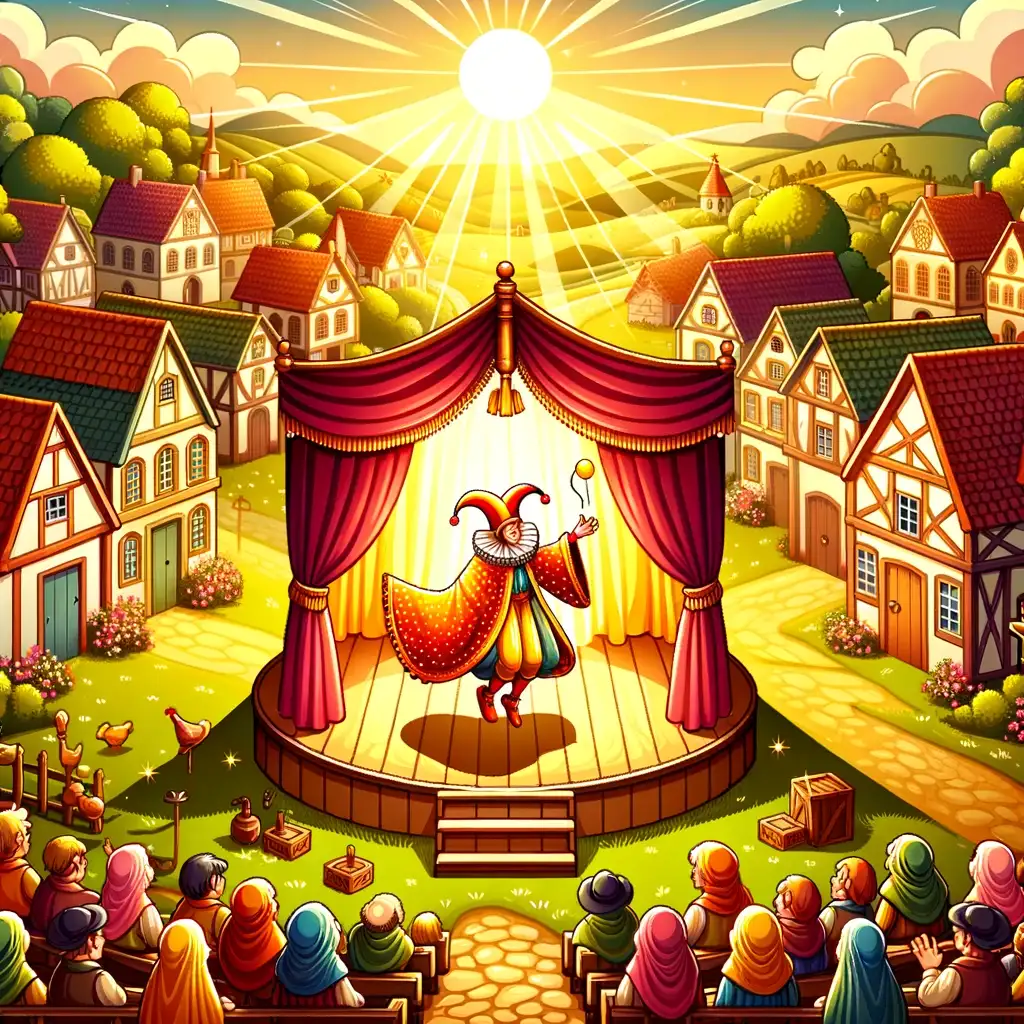
The Buffoon and the Countryman – An Aesop’s Fable
Dressed in a multicolored cloak that mimicked a painter’s palette, the Buffoon sprang onto the makeshift platform. The atmosphere was electric, tinged with an air of exhilaration. With a dramatic flair, he launched into his repertoire, flawlessly imitating the croaks of ravens and the bleating of lambs. The assembly roared in delight, their applause cascading like a monsoon rain.
Yet, his tour de force lay in his imitation of a pig’s squeal—a performance so convincing that murmurs of incredulity rippled through the audience. Was he concealing a pig in the folds of his attire? Was this craftsmanship or mere chicanery?
Amid the spectators stood a Countryman, a man whose soul was rooted in the soil and the creatures it nourished. He stood in silent reflection, his eyes narrowed in deep thought. Finally, he broke the silence, his voice reverberating above the chatter, “Is that what you consider a pig’s squeal? Allow me until tomorrow, and I shall reveal the quintessence of that sound.”
The crowd burst into derisive laughter, dismissing the Countryman as a presumptuous visionary. However, the next day saw the villagers reassembled, their curiosity outweighing their cynicism. The Countryman commanded the stage. He bowed his head and emitted a squeal so unsettling, so unnervingly authentic, that it jolted the spectators. A volley of boos and stones came his way.
Then, raising a small pig for everyone to witness, he declared, “Behold, this is the object of your scorn!” He had lightly pinched the pig’s ear, producing the unsettling sound that had offended the crowd. The Countryman had laid bare an unvarnished truth, only to be met with scorn.
What principles and lessons can be learned from the above stories?
The narrative of the Buffoon and the Countryman offers an eternal lesson on the complexities of perception and genuineness. The villagers celebrated the Buffoon’s artistry as it served as an escape—a joyful diversion from the mundanities of life. Yet, when faced with the Countryman’s unvarnished truth, they recoiled in discomfort.
What does this reveal about human nature? Are we inherently more at ease with delightful illusions than with unsettling realities? The moral here is to be wary of our susceptibility to outward appearances and to value the essence of things, even when it makes us uncomfortable. By lightly pinching the pig’s ear, the Countryman compelled the villagers to confront the unsettling truth that, at times, reality can be more intolerable than fiction.


